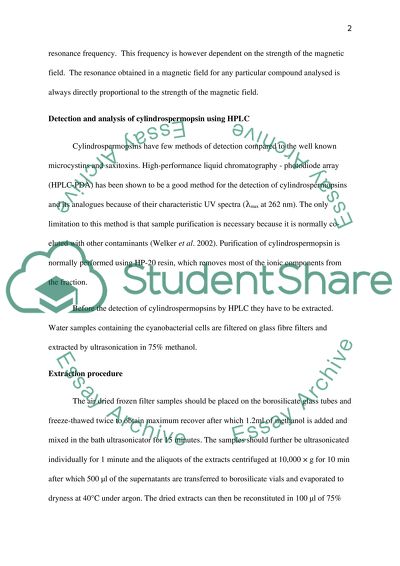Cite this document
(“Detecting the Cylindrospermopsin using HPLC-PDA and NMR Assignment”, n.d.)
Detecting the Cylindrospermopsin using HPLC-PDA and NMR Assignment. Retrieved from https://studentshare.org/chemistry/1457468-cylindrospermopsin
Detecting the Cylindrospermopsin using HPLC-PDA and NMR Assignment. Retrieved from https://studentshare.org/chemistry/1457468-cylindrospermopsin
(Detecting the Cylindrospermopsin Using HPLC-PDA and NMR Assignment)
Detecting the Cylindrospermopsin Using HPLC-PDA and NMR Assignment. https://studentshare.org/chemistry/1457468-cylindrospermopsin.
Detecting the Cylindrospermopsin Using HPLC-PDA and NMR Assignment. https://studentshare.org/chemistry/1457468-cylindrospermopsin.
“Detecting the Cylindrospermopsin Using HPLC-PDA and NMR Assignment”, n.d. https://studentshare.org/chemistry/1457468-cylindrospermopsin.


